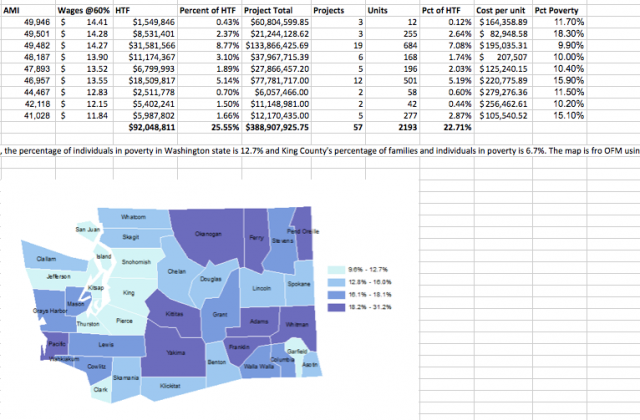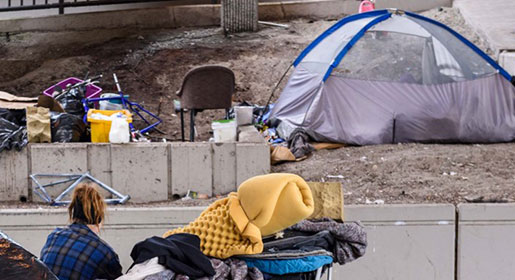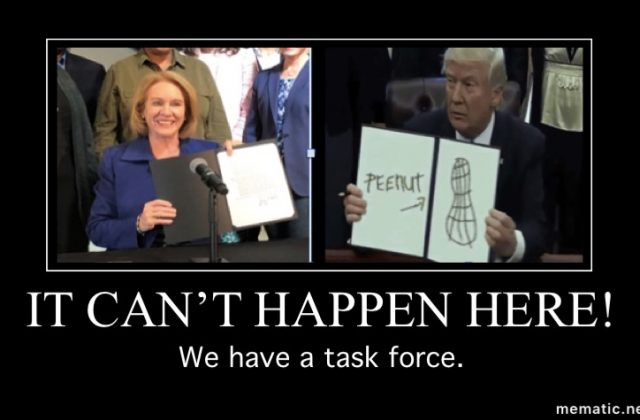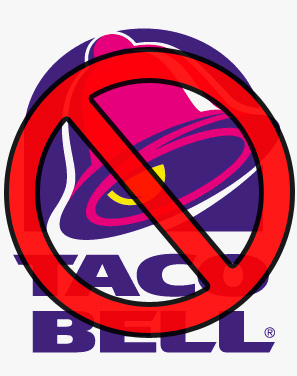Looking Forward, Looking Back: Summer Throwback Series on Density
I know most people think I am outraged. I am. I’m really fed up with the direction of our city, particularly when it comes to housing. We’ve really lost the thread. The latest absurd thing going on is the “Save the Showbox” effort, a discussion almost completely void of anything edifying. And do we know the outcome? Of course. Compliant City Councilmembers and the Mayor will codify the performance art of Councilmember Sawant and do something irrevocable and ultimately unhelpful. Here’s an email exchange I had with a frequent correspondent from Portland.
He wrote:
Hey Roger,
I was just at a Pearl Jam show at safeco last night. It was to raise funds to help reduce homelessness. They were also advocating for saving the show box theatre from turning into. . . Well homes. I understand this disconnect is common and annoying but I also don’t disagree that certain individual establishments are worth saving. That is where my search for answers dries up. There are plenty of articles talking about the city council trying to save it but nothing that explains why it is or was for sale. Do you know why? I am guessing hat either they were unable to make a profit despite the supposed love for the place. Or it is a vulnerable building in case of an earthquake and it was not worth the retrofit expense. In both instances would it not make sense to sell the air rights? That could raise the money to either retrofit it or get them into a better financial situation.
Just curious.
I responded:
Yes, you’ve nailed it. I don’t have any inside information on why it is being sold, but you’d think the people at City Hall and in the debate would bother to ask that foundational question of the seller and the buyer: why are you selling this building and why are you buying it?Getting that answer would lead to the solution.The Unreenforced Masonry (URM) building problem is a serious one both in terms of safety but also in terms of economics. How does one pay for the retrofits? How does one pay for the retrofits and keep the existing use? Is there any subsidy available to do that?Instead the “debate” is about, well, a bunch of other unrelated stuff.The right answer if there is a public mandate to “save” the Showbox, is to sell the development rights (which requires a buyer who can actually use them, and that means an economical upzone somewhere else), an appropriate retrofit of the building, and a commitment to locking in theater use. Theater uses are notorious not money makers. Is the City willing to back a theater/music venue there? If they’re not, all they’re doing is preserving a building when what they intended to do is preserve the use.Anyway, this is as much energy as I’ve spent on the topic. Maybe I’ll turn this into a blog post.There are absolutely zero people listening to common sense on this issue at least at City Hall. So they’ll plow ahead and in the not too distant future my guess is that the use will probably run into an inevitable wall, be unable to make renovations to make it economically viable, and then it will be a closed, vacant venue enshrined in the land use code as a historic monument.Good work Seattle!
Digging Up Bones: Farmworker Housing Remains a Serious Need
I’ve written about it before, but this article goes back 20 years. Today’s shortage of farm labor (see: Washington growers struggle with a labor shortage) is made worse by lack of housing in rural Washington. Meanwhile the Housing Trust Fund pours more and more cash into pricey projects in Seattle, projects that are made more expensive by self-inflicted regulatory overreach. When I wrote this article, the issue facing the state was what to do with a crisis in Eastern Washington. Today, the housing problems created by the Seattle City Council mean more and more state resources are consumed here; that means fewer dollars for Farmworker housing and all housing in rural Washington. Washington’s agricultural economy needs labor, and without housing that labor can be hard to find. And when farmers can’t find workers it means food gets more expensive. Seattle drives the state’s policy, and unless and until Seattle legislators hold the City Council accountable, this problem will keep getting worse.
Digging Up Bones: When It Comes to Housing, Not Much Has Changed Since 1998
I’ve been going through some old boxes and among other things, I’ve discovered some articles I wrote in the late 1990s. Among the many peculiarities of finding things from the past is the fact that these articles aren’t available electronically. Back then, in order to use these articles I had to cut them out, arrange them on a page, then use a glue stick to put it all together. Then I’d make a photo copy of that, then, yes, fax it to whoever I wanted to see it. I might also use the United States Postal Service and fold up the article and put a stamp. What a hassle!
Yes it was a quaint time. But what isn’t so quaint is that virtually nothing has changed in 20 years except technology. I could have written this article today and it probably wouldn’t be considered out of sync with the times. It was 20 years ago and we had encampments in the Jungle, an improvised housing camp under I-5 and lots of money being proposed for stadium improvements. And back then, we still didn’t know what to do about it.
At the time, I was a neighborhood activist and vice president of the North Beacon Hill Neighborhood Council. About a year later I became a Neighborhood Development Manager (NDM), a job implementing neighborhood plans in the southwest sector of the city. I also had been involved in farmworker housing issues in Olympia. I’m sharing this because, well, it shows that we haven’t come all that far. While I can post articles now on Facebook with a couple of mouse clicks, we still can’t figure out that what we need is more housing of all kinds, in all parts of the city for people of all levels of income. That’s just too damn complicated and hard for City officials.
Leadership: Can It Happen Here?
All right. Hell with this country, if it’s like that. All these years I’ve worked—and I never did want to be on all these committees and boards and charity drives!—and don’t they look silly now! What I always wanted to do was to sneak off to an ivory tower—or anyway, celluloid, imitation ivory—and read everything I’ve been too busy to read.
Doremus Jessup in “It Can’t Happen Here,” a satirical novel by Sinclair Lewis published in 1935
In a gesture widely regarded by all sides as an impotent one, Seattle Mayor Jenny Durkan established a committee made up of representatives of the tech industry to
Harness the expertise of Seattle’s best technology organizations and brightest minds towards solving the challenges of our City, including addressing the affordability and homelessness crisis
Just what we need: another committee.
The collective eye roll at the creation of this committee wasn’t because it isn’t a good idea to ask smart people to help solve problems, but because the city has already asked smart people for their help a million times.
Remember one of the last big committees that was supposed to make recommendations about how to solve the housing “crisis,” the Housing Affordability and Livability Agenda (HALA) Committee?
Of the dozens of recommendations made by the HALA Committee only one, the implementation of an illegal program of exactions from the production of new housing, Mandatory Inclusionary Zoning (MIZ), is being implemented. The others, including a few that called for the City to make permitting for housing more efficient and coherent, have gone nowhere.
This Mayor needs help.
It is counterintuitive, but leadership requires an acknowledgment of ignorance. Power without knowledge is simply brute force. When someone with power admits that she knows nothing about something like housing and asks for help, that is leadership. A leader says, “I have the power and a mandate from the people to solve this problem and you have the knowledge of the problem. Tell me what you think I should do.”
At that point a leader sifts through the recommendations and finds those that align with her broader views about where she wants to take the city. Then she implements them by empowering people under her direction and then holds them accountable for achieving outcomes.
Unfortunately, like Donald Trump has, people in power often confuse signing a document or making an order or assembling a task force or committee as doing something. It isn’t. At best, asking a group of smart people to sit in a room and have a talking circle about an issue is a waste of their time – at worst it produces political documents that merely restate how bad the problem is and pine for politically unachievable solutions. These groups, for example, always end up saying things would be better if we only had a state income tax.
The City and the Mayor have already been told that the shelter system has too many barriers for people who need to access it and the entry system into shelters is uncoordinated. The City has been told, over and over again, that more rules and regulation strangle all housing production, including non-profit affordable housing. I could go on and on.
Pride devoured our last Mayor. Will it devour this one too? Perhaps. But Mayor Durkan can turn off her internal monologue which I am sure tells her she’s smart and politically savvy, and instead listen to people who actually know about housing, then use her power to actually help people.
The Mayor and Council couldn’t even execute the tax on jobs, a poorly conceived idea but one that had support. The City proposed it, realized it and they were unpopular, and then repealed it believing it was the lies and the money of the business community that duped voters to sign their names thousands of times.
This city is on the verge of either coming up with ways of coherently and efficiently addressing housing issues, doing something like MIZ that will make that problem worse, or simply standing around watching the problem become permanent and intractable. The Mayor is showing us that she favors the second and third options. It’s not to late to correct course.
Error Message: Seattle Times Keeps Missing the Mark on MIZ and MHA
This is my response to the recent editorial in the Seattle Times on Mandatory Inclusionary Zoning (MIZ) and Mandatory Housing Affordability (MHA), the City of Seattle’s scheme to take money from new housing development and give it to non-profits. It is only the latest in a long serious of communications with the Times to get it right: the Grand Bargain was not with developers but with a few big developers.
Hi Mark,
I appreciate that the paper continues to talk about MHA, but Brier Dudley’s article once again mischaracterizes things.
The people I work with who build housing have no clout with the City. The Mayor isn’t listening to us. To suggest that somehow we all worked out a deal is just flat wrong.
Vulcan did that. They bought out at the beginning in SLU and Downtown.
We’re looking at a legal challenge because everyone is holding the bag.
The fees are onerous for many projects, not just a few months rent.
Yes, there are problems with the fee structure but not because fees are too low but because they are arbitrary; I did a Public Disclosure Request (PDR) the fees paid so far.
The project on Dexter is an 85 unit project while the project at 23rd in Union is a much bigger project with more than 100 units. Why the difference? They can’t tell us straight up what’s going. I have to PDR the agreement they reference.
We’re not getting away with anything. Any fee or charge or tax is rationalized by the price, and prices will go up to absorb the fees. And other costs like the ones I’ve attached are eating builders and developers alive. When projects get hit with additional costs prices go up or projects don’t happen.
Again, the housing being produced by non-profits is heading toward $500k per unit. Plymouth Housing is building 84 units of studio units for more than $30 million, about twice what market rate developers would pay.
I’d be happy to write another op ed if it would get used. But more importantly I wish the Times would simply cover the different points of view. If the Times Ed Board supports MHA and higher fees, fine. But there is a constant representation that the deal signed by Vulcan was on behalf of all developers. We’re actually working on a legal challenge.
And again, saying the “Grand Bargain” was struck with developers is like suggesting a deal struck with Taco Bell is a deal with all Mexican restaurants in town. It’s weird. But it is wrong.






